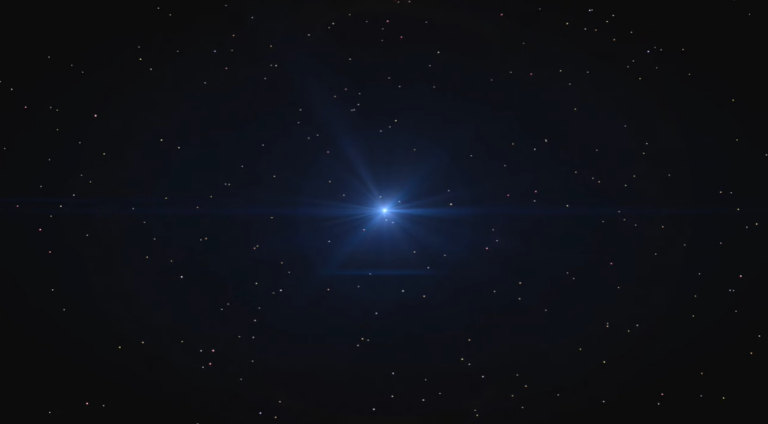Unveiling the Enigmatic Stellar Species Preordained for Spectacular Supernovae
When colossal stars meet their end, it is far from a quiet affair. Their demise unfolds as a spectacular supernova, outshining entire galaxies in the night sky, expelling celestial material into space, and witnessing the collapse of their core into either a black hole or neutron star.
Through meticulous cataloging and analysis of these cosmic explosions, scientists have observed a peculiar trend – a significant number of supernovas exhibit an unusual absence of hydrogen. This anomaly suggests the existence of a substantial population of hydrogen-poor stars, the presumed progenitors of such supernovas. Previous astronomical predictions estimated that approximately one-third of massive supernova progenitors must lack hydrogen.
Despite this anticipation, searches for these hydrogen-poor supernova candidates initially yielded disappointing results, leaving scientists puzzled. However, a dedicated survey aimed at identifying these elusive stars has successfully uncovered 25 stellar candidates that precisely fit the anticipated profile. The once-speculative existence of these stars has been confirmed, providing valuable insights into their identification.
Astronomer Maria Drout of the University of Toronto, co-leading the research with astrophysicist Ylva Götberg from the Institute of Science and Technology Austria (formerly at The Observatories of the Carnegie Institution for Science, Pasadena, in the US), expressed the significance of this discovery. Drout remarked, “This was such a big, glaring hole. If it turned out that these stars are rare, then our whole theoretical framework for all these different phenomena is wrong, with implications for supernovae, gravitational waves, and the light from distant galaxies. This finding shows these stars really do exist.”
In accordance with prevailing theories, the hydrogen-poor supernovas, commonly referred to as stripped-envelope supernovas, are theorized to originate from binary star systems. Instances of stars in close binary configurations transferring material between each other have been observed previously. In such binary pairings, one star draws away the hydrogen envelope from its companion, resulting in a helium star with a diminished hydrogen content. Consequently, when the helium star undergoes a supernova, it releases minimal hydrogen into its surroundings.
While helium stars at the higher end of the stellar mass spectrum, with sufficient mass to collapse into black holes upon death, have been observed, there has been a scarcity of such observations in the mid-range. Stars that initiate their existence with masses ranging from 8 to 25 times that of the Sun fall into this mid-range category. This poses a challenge as these stars serve as the precursors to neutron stars and, according to theoretical predictions, are the progenitors of neutron star mergers. They are expected to be more abundant than their larger counterparts.
However, detecting these mid-range stars proves challenging. Stripped of their outer layers, much of the emitted light falls outside the visible spectrum. Additionally, with a larger, brighter companion star that has absorbed hydrogen from its counterpart, the helium star in close orbit becomes even more challenging to observe.
To overcome these limitations, researchers conducted surveys in ultraviolet light. From 2018 to 2022, the Swift Ultra-Violet/Optical Telescope was employed to scrutinize millions of stars in the Large and Small Magellanic Clouds, which are dwarf galaxies orbiting the Milky Way. From this extensive survey, 25 candidates exhibiting distinctive ultraviolet profiles were selected for further investigation. The Magellan Telescopes were then utilized to acquire optical spectroscopic data, unveiling the chemical compositions of these stars.

Their predictions were spot on. The stars they examined exhibited the anticipated characteristics of intermediate-mass helium stars, boasting elevated temperatures, high surface gravity, abundant helium, and minimal hydrogen. Notably, sixteen of these stars displayed motion consistent with having a binary companion.
“We demonstrated that these stars displayed a blueness surpassing the stellar birthline, representing the bluest phase in a single star’s lifespan,” remarked Götberg.
“Typically, individual stars evolve towards the redder region of the spectrum as they mature. A deviation in the opposite direction suggests the removal of outer layers, a phenomenon expected to be prevalent in interacting binary stars and rare among solitary massive stars.”
This marks merely the initial stride. The research team is presently delving deeper into the comprehensive study of these stars to unravel more about their nature. Simultaneously, they are broadening their search to identify additional helium stars. Importantly, they have made their data and theoretical models publicly available, encouraging collaboration from other scientists in the pursuit.
“Our investigation enabled the identification of the elusive population of intermediate-mass, stripped helium stars, projected progenitors of hydrogen-poor supernovae. These stars have always existed, and there are likely many more awaiting discovery. We just need to devise methods to detect them,” Götberg emphasized.
“While our work represents one of the initial efforts, alternative approaches are undoubtedly feasible.”
The research has been published in Science.
This article is republished from ScienceAlert under a Creative Commons license. Read the original article.
Do not forget to share your opinion with us to provide you with the best posts !




0 Comments